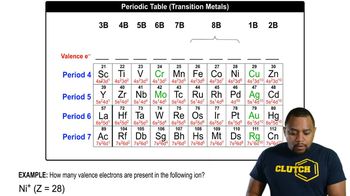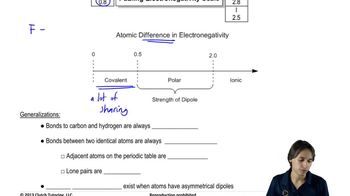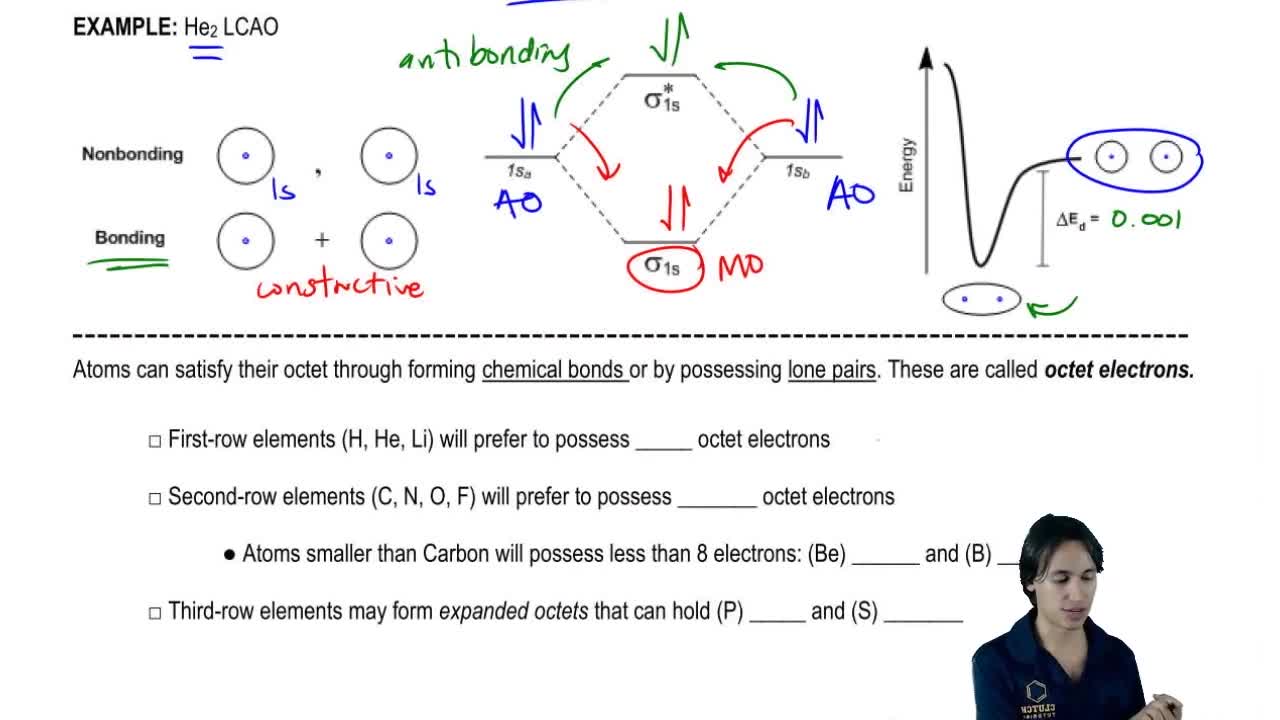Which of the atoms in the molecular models in [Problem 20] have
<IMAGE>
a. three lone pairs?
b. two lone pairs?
c. one lone pair?
d. no lone pairs?
 Verified step by step guidance
Verified step by step guidance Verified video answer for a similar problem:
Verified video answer for a similar problem:



 2:14m
2:14mMaster What is a valence electron? with a bite sized video explanation from Johnny
Start learning